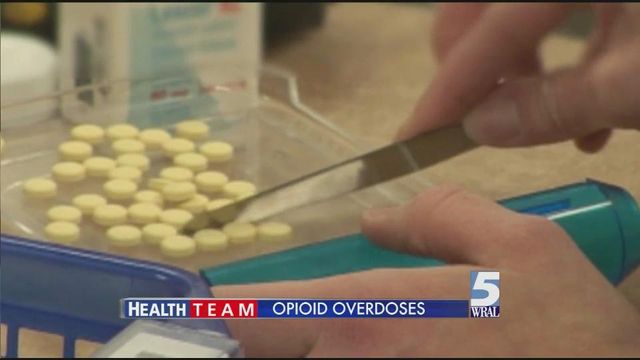Opioid overdoses are common, preventable
Epidemic numbers of people are dying due to overdose of a common type of prescribed pain killer called opioids. The Centers for Disease Control and Prevention says from 1999 to 2014, opiods were the cause of death of more than 165,000 people in the U.S.
Posted — UpdatedEpidemic numbers of people are dying due to overdose of a common type of prescribed pain killer called opioids.
The Centers for Disease Control and Prevention says from 1999 to 2014, opiods were the cause of death of more than 165,000 people in the U.S.
A new study, though, shows doctors are writing these prescriptions to patients even after a previous overdose.
Researchers at Boston Medical Center looked at 3,000 patients who had survived an opioid related overdose between 2000 and 2012. They found more than 90 percent of these patients continued to receive the prescriptions even after their overdose.
Upon following those patients over the next 300 days, an additional 7 percent of them overdosed a second time.
In a majority of cases the researchers report that the same doctor wrote the opioid prescription before and after the first overdose.
The cause of the recurring problem could be a communication gap between patients and their doctors—the doctors who wrote the prescriptions probably did not know about the first overdose.
If the patient is sent to an emergency room or a hospital affiliated with the prescribing doctor there is a chance that the information is not relayed to that doctor. The physician might only know about the overdose if their patient tells them about it.
To bridge a possible communication gap, the North Carolina Controlled Substances Registry System logs narcotic prescriptions as they are filled by a pharmacy, which helps identify people who abuse or misuse prescription of drugs classified as II-V controlled substances.
Friends and family of a person who has overdosed on an opioid can help, too: That person could contact that patient's doctor to make sure they are aware of the overdose.
There are also emergency rescue kits in many pharmacies called "naloxone," which can be used to treat an opioid overdose in an emergency situation.
Friends can also encourage people who are addicted to opiods to seek professional addiction treatment. There are medications available in those programs that are proven to save lives.
The CDC estimates that 20 percent of patients presenting to a doctor's office with non-cancer pain receive an opioid prescription. Guidelines released recently by the center have recommendations for more options for chronic pain therapy to minimize opioid use.
Doctors need a treatment plan before starting opiods to understand how and when they can be discontinued.
Whe opioids are prescribed, they should start with the lowest possible dose, and there needs to be a discussion with patients about the risks and benefits of these medications before patients start them.
For acute pain, use the lowest possible dose and prescribe for no more than three to seven days.
• Credits
Copyright 2024 by Capitol Broadcasting Company. All rights reserved. This material may not be published, broadcast, rewritten or redistributed.





